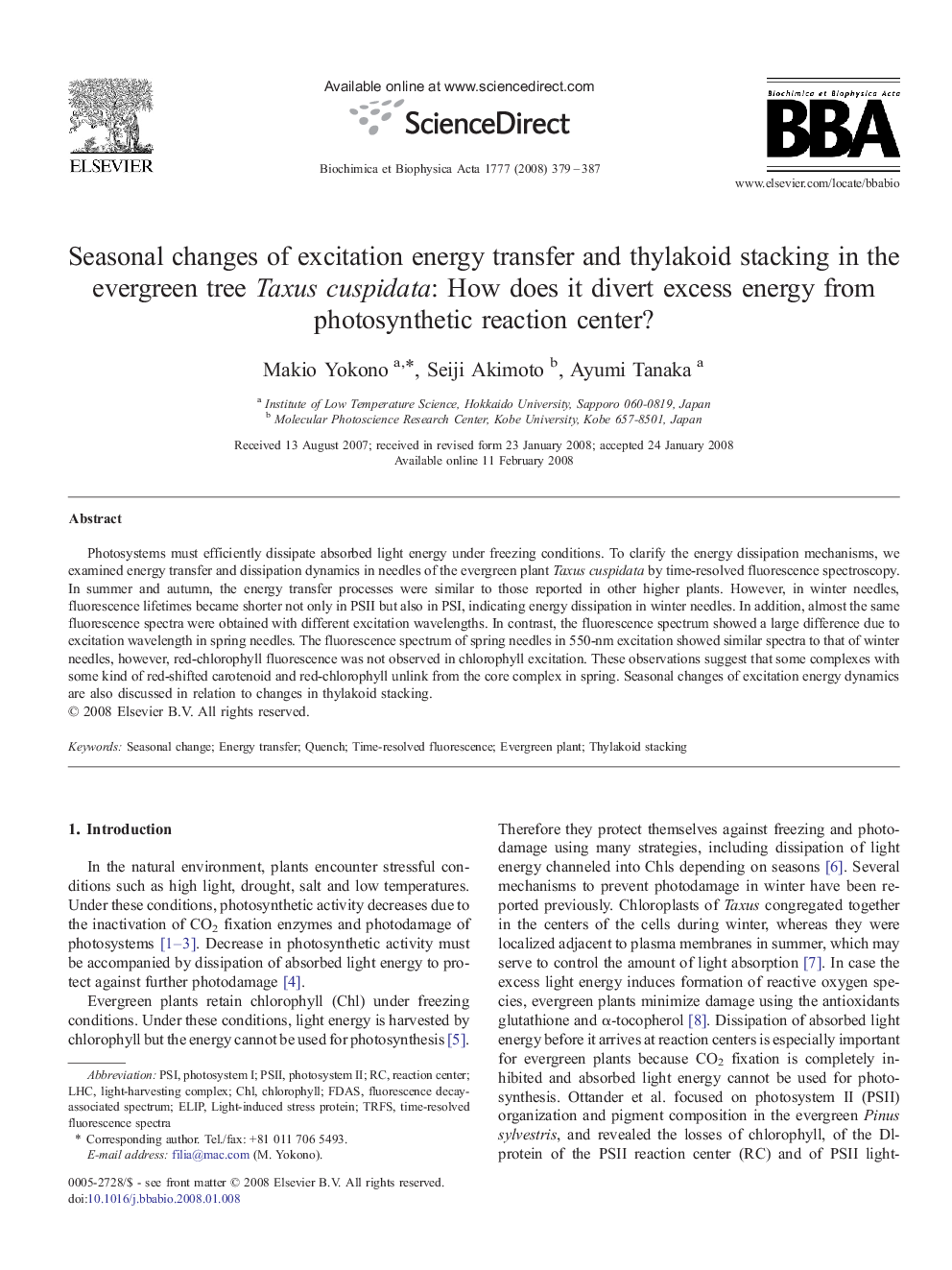| Article ID | Journal | Published Year | Pages | File Type |
|---|---|---|---|---|
| 1943251 | Biochimica et Biophysica Acta (BBA) - Bioenergetics | 2008 | 9 Pages |
Photosystems must efficiently dissipate absorbed light energy under freezing conditions. To clarify the energy dissipation mechanisms, we examined energy transfer and dissipation dynamics in needles of the evergreen plant Taxus cuspidata by time-resolved fluorescence spectroscopy. In summer and autumn, the energy transfer processes were similar to those reported in other higher plants. However, in winter needles, fluorescence lifetimes became shorter not only in PSII but also in PSI, indicating energy dissipation in winter needles. In addition, almost the same fluorescence spectra were obtained with different excitation wavelengths. In contrast, the fluorescence spectrum showed a large difference due to excitation wavelength in spring needles. The fluorescence spectrum of spring needles in 550-nm excitation showed similar spectra to that of winter needles, however, red-chlorophyll fluorescence was not observed in chlorophyll excitation. These observations suggest that some complexes with some kind of red-shifted carotenoid and red-chlorophyll unlink from the core complex in spring. Seasonal changes of excitation energy dynamics are also discussed in relation to changes in thylakoid stacking.
